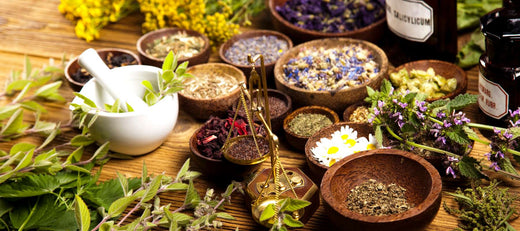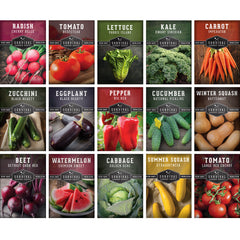If you’re wanting to plant seeds outside but it’s cold or snowy in your area, perennial wildflowers can scratch that itch. Many of these seeds need some time in frigid temperatures and wet conditions to break dormancy before germination. Take advantage of the snow now and enjoy vibrant wildflowers later!
Why Do Some Seeds Need Cold?

Many varieties have soft outer coatings, and all that is required for germination is moisture and heat. These seeds can be planted directly in the garden or started indoors in spring. However, some seeds rely on the natural cycles of the seasons for germination. As seeds freeze, thaw, and freeze again, the hard outer coating on these seeds is damaged and cracked. Once the temperature is warm enough for germination, the shell is soft enough for the young plant to emerge.
Examples of seeds that need cold to emerge include various perennial flowers, including yarrow, echinacea (coneflower), lavender, and milkweed. Annual vegetable crops don’t require this step, because the trait has been bred out of them through centuries of cultivation, but native wildflowers rely on the rhythm of the seasons instead of human intervention.
Let Mother Nature Do the Work

If you live in an area with cold zones, sowing in late fall to midwinter can give your seeds the head start they need for germination once the temperatures warm up. Select a site that gets at least 6 hours of sunlight a day and has good drainage. Remove all existing vegetation and prepare the soil. Then sow the seed directly on the soil, lightly firming the seeds into the soil by walking over the area. You can also sow seeds on top of snow if needed. Repeated snowfall will bury the seeds more deeply and get them closer to the ground.
If you choose to do this method, don’t wait too long. At least a month of consistently cold weather is necessary, but 2 or 3 months would be even better. If you’ve missed your window of opportunity, you can still grow seeds that require cold to break dormancy. You’ll need to use the same technique that those of us who live in warmer climates use: cold stratification.

How To Cold Stratify Seeds
In areas with mild winters, the cold weather might not be reliable enough to break down the seeds’ outer shells. You'll have better luck if you do any seed scarification or cold stratification yourself. Luckily, this is easy to do. Sprinkle your seed onto a wet paper towel, fold, and put it in a plastic bag. Then keep it in the refrigerator for 3 to 4 weeks to simulate the cold of winter.
As always, it’s best to consult your seed packet for the specific needs of your chosen varieties. The instructions will indicate if your seeds need cold for success. It doesn’t take a lot of work, but a little bit of preparation now can mean more flowers to enjoy in the summer months.
























